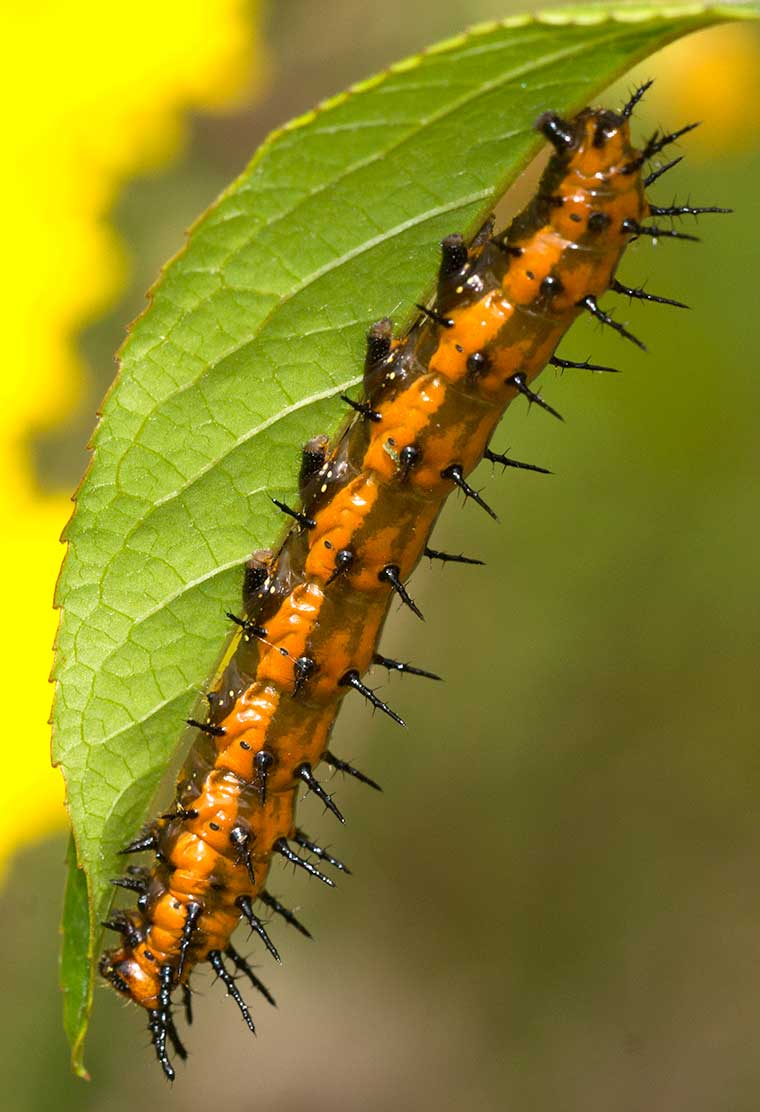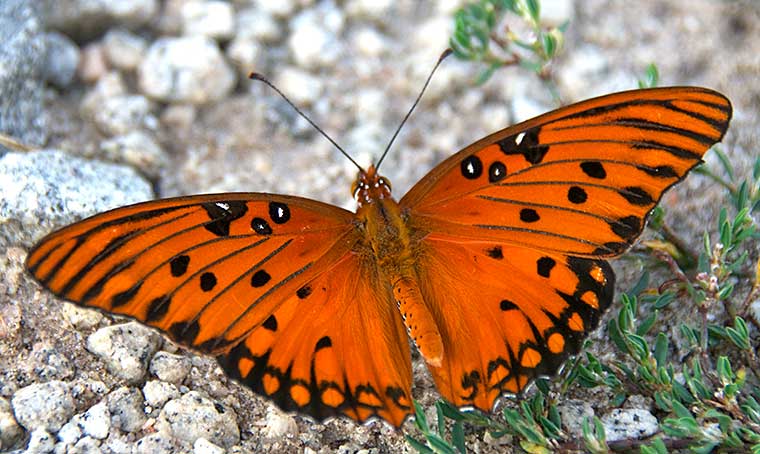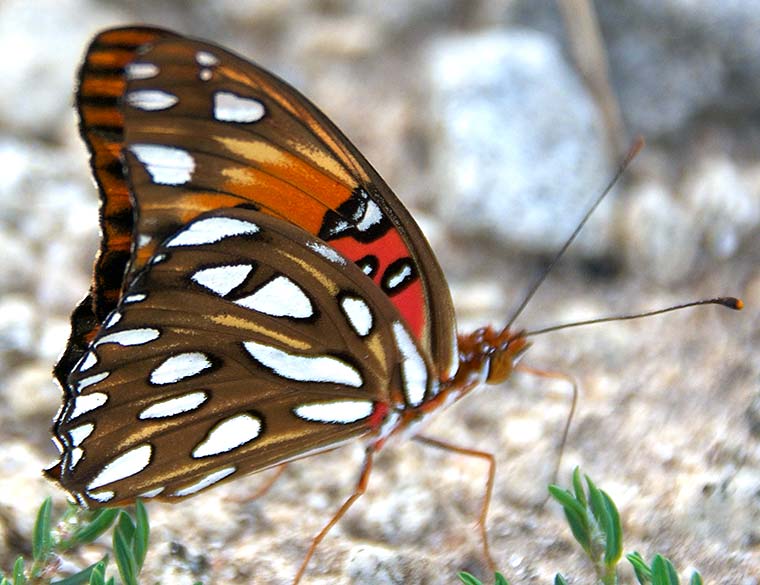Our small field has several plants of Passion Flower (Passiflora incarnata), also called Maypop, that appear each year. These plants are very toxic. They contain a number of noxious secondary compounds which inhibit grazing by insects or larger predators. A few butterflies in a group called “Longwings” have, however, evolved an immunity to the toxic compounds, and the larvae are able to eat the leaves of Passion Flowers with impunity. In fact, both the adults and the caterpillars store the toxic compounds from the plant in their bodies. This makes them very distasteful to their own predators, such as birds. Caterpillars and adults of Longwings are brightly colored and conspicuous. Bright colors are a warning to predators that the creature displaying the colors is toxic or distasteful.
The caterpillar illustrated above is the larval form of the Gulf Fritillary (Agraulis vanillae) a butterfly in the Longwing group, and it seems quite well-fed on one of our Passion Flower vines. Can you tell which end is the head?
The two photographs below show the Gulf Fritillary butterfly, and show that it is just as brightly colored and conspicuous as is the caterpillar.




Lord Chile, I wouldn’t dare eat that ugly caterpillar of the Maypop. We also have a vine that just came up this year with that beautiful lavender flower. I cannot tell which end is up. HA! The butterflies are beautiful though!
The caterpillar’s head is toward the bottom of the photograph.
Gary
I think that I photographed this beauty (albeit not very well) in Baja California. It was the only butterfly I managed to snap so I am grateful for the identification.
John